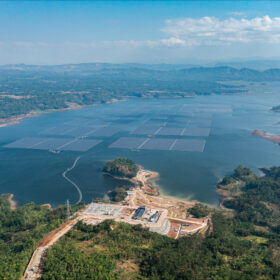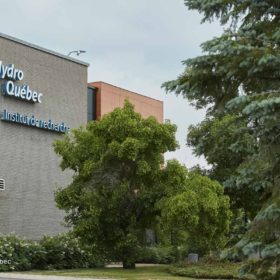Chinese PV Industry Brief: JinkoSolar posts 19% spike in PV shipments in 2024
JinkoSolar says its global PV shipments grew 19.2% year on year to 99.6 GW in 2024, but revenue fell 22% to CNY 92.2 billion ($12.64 billion) due to a decline in module prices.
EnergySage ranks top solar panel brands in US market
EnergySage, a residential PV marketplace operator, has released a review of the top solar panel brands in the US market.
Trina Solar sues Canadian Solar over patents in $147 million lawsuit
Trina Solar has filed a lawsuit against Canadian Solar and its subsidiary, seeking $147 million in damages for alleged infringement of tunnel oxide passivated contact (TOPCon) cell patents. The case, accepted by the Jiangsu High Court, underscores the rise of intellectual property disputes in China’s competitive solar sector.
Chinese PV Industry Brief: PowerChina signs 1.05 GW Terra solar deal
PowerChina has signed a contract with Manila Electric for the 1.05 GW Terra solar project in the Philippines, as part of the 2.45 GW Terra Project, which also includes 3.3 GWh of energy storage.
Canadian Solar, Toyota Tsusho sign 20-year PPA in Japan
The power purchase agreement covers all the energy generated at a 1.2 MW facility in eastern Japan and a 1.9 MW site in the south west of the country.
Are the days of cheap finance for Chinese solar over?
The Chinese PV industry has benefited from the availability of substantial finance over the past two decades, supporting the development of the renewable, zero-carbon capability essential for meeting the goals of the Paris climate agreement. Easy access to finance has led to unsustainably low prices and unnecessary losses, however, impacting China’s ability to sustain support for renewable energy systems. As the nation expands clean power installations and enhances grid-balancing capacity, maintaining consistent financial support has become more challenging.
Recurrent Energy secures €1.3 billion financing for European project pipeline
The subsidiary of Chinese-Canadian solar manufacturer Canadian Solar says the financing will go towards developing and constructing solar and battery energy storage projects across Spain, Italy, the UK, the Netherlands, France and Germany.
Weekend Read: Solar giants enter the storage market
Energy storage is the new solar for an increasing number of Chinese PV manufacturers. However, China still requires enabling policies for storage to provide the end-market volumes needed to bolster the fortunes of manufacturers old and new.
Quebec announces 300 MW solar tender
The government of the Canadian province of Quebec aims to deploy 300 MW of solar through tenders under utility Hydro-Quebec, in a bid to diversify the supply of renewables.
Scotland gives green light for 1.5 GW of battery storage
UK-based Alcemi says it has obtained planning permission for the construction of 1.5 GW of battery energy storage system (BESS) projects in Scotland, developed in partnership with Copenhagen Infrastructure Partners (CIP).









